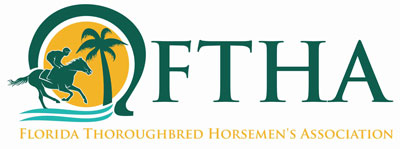Common Sense Medication Testing: R.I.P.
By Kent H. Stirling, FHBPA Executive Director
February 11, 2011
“My answer is that you should stay in a common sense situation, and as soon as the techniques lead you into nonsense, you should reverse. The philosophy must produce the technique, and the technique must not produce the philosophy” (emphasis added). So stated, Dr. Roland Devolz of France, then with the Societe D’Encouragement and now the International Federation of Horseracing Technical Advisor on regulatory matters at a workshop on testing of therapeutic medications at the Gluck Equine Center at the University of Kentucky. This round table discussion at that workshop took place over 16 years ago, and included Dr. Rick Sams, Dr. Rick Arthur, Dr. David Cowan of the British Royal Pharmaceutical Society, Dr. Tom Tobin and Adrienne Stevenson, Director of Analytical Services for the Canadian Pari-Mutuel Agency (CPMA).
All of these participants seemed to agree with Dr. Devolz that we were entering into “nonsense” testing because of the sensitivity of testing techniques, like the then new ELISA tests. While ELISA testing may have been “state of the art” in 1994, they can’t match the sensitivity of some of the newer High Performance LC-MS Mass Spectrometers and other ultra sensitive devises being used by labs now. These new devices have increased the sensitivity of equine drug testing by more than a thousand fold in the last 17 years.
During this workshop Dr. Tobin of the Gluck Equine Research Center, Dr. Rick Arthur, then a well-known practicing veterinarian in Southern California, and virtually all of the other panelists agreed that about ten therapeutic medications caused more than fifty percent of medication violations. These ten therapeutics were: acepromazine, dexamethasone, flunixin, isoxsuprine, methocarbamol, prednisone, prednisolone, procaine, promazine and pyrilamine. It was agreed that these ten should be targets for future studies on limitations on sensitivity, or testing thresholds, along with withdrawal times.
Another interesting common sense statement was made by Dr. Rick Sams, then of the Ohio State Racing Laboratory, who stated that horsemen and vets should be notified when the lab introduces a more sensitive test for a therapeutic medication. “We don’t surprise them by introducing a more sensitive test”, stated Dr. Sams.
A few years earlier, the Jockey Club commissioned McKinsey & Company to produce a national strategic plan for “Building a World Class Drug Detection System for the Racing Industry.” Known as the McKinsey Report it was finalized in May of 1991. In its recommendations, it suggested a national research program whose first goal should be to, “Establish threshold levels for any drugs allowed to be present on race day”.
Again this was twenty years ago when testing below the microgram level for the most was pretty much uncharted territory. Now testing at the nanogram level (billionth of a gram) has become dated testing, and we can now test to single digit picogram levels (trillionth of a gram).
The McKinsey Report further stated under a section titled, “Drug Detection Challenges”:
“The effective discovery of illegal drug usage has been significantly hindered by wide variation in drug rules and in actual drug testing practices. State rules on drug usage vary widely. For example, several states’ rules are written in “Delaney clause” language, i.e., “If any substance is found in the specimen a positive will be declared…” Yet, virtually all states allow the use of certain drugs in training for therapeutic reasons which may often be present in trace amounts (too small to quantify) on race day…
Compounding the problem caused by industry variation in rules are inconsistencies in the application of these rules. Different states make different calls on the same drugs, and even within a state different people may reach different conclusions. Adding to the complexity, constantly improving testing capabilities (e.g., immunoassay screening) are detecting more and more minute levels of drugs, particularly in the animal’s urine. As a practical response to this situation, chemists sometimes make judgments, regardless of what the rules state, that the levels detected are or are not sufficiently performance-affecting to justify the calling of a positive. Unfortunately, chemists often do not have the guidance of veterinary pharmacologists in making these judgments regarding performance impact..
Essentially McKinsey was saying that too much effort was focused on testing for irrelevant traces of therapeutics, and not enough on illegal drugs, and that chemists were often calling everything detected, with absolutely no guidance from veterinary pharmacologists, and therefore, with no regard to the substance’s ability to affect performance.
So what has happened in the last 20 years to improve equine testing so that thresholds are being developed for at least the ten therapeutics named above to counter the “nonsense” testing that now takes place with machines and techniques that now test at a level more than a thousand fold more sensitive than in the early nineties when this was deemed to be the problem?
Virtually nothing.
Oh right, the RMTC recently announced a suggested threshold and withdrawal time for methocarbamol at 24 and 48 hours prior to post time, while at the same time it now backs away from a threshold and withdrawal time it established for flunixin six or seven years ago.
What about all the drug testing problems for therapeutics pointed out by the McKinsey Report, have they been addressed?
Hardly! Most chemists call every therapeutic they can detect with no veterinary supervision, but now with testing technology that gets more sensitive every year.
Are horsemen being warned about the new and more sensitive therapeutic medication tests being used on their horses?
I can think of only one state that “says” it does.
If I listed all the states that continue to use their Limit of Detection, LOD, to call positives on any and all therapeutic medications, I would run out of space.
R.I.P. Common Sense Medication Testing
954.457.3516 | info@floridahorsemen.org



